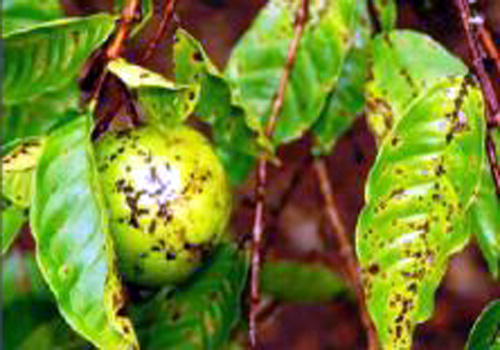Disease management :
Fruit spot (Cephaleuros virescens Kuntze)
 Symptoms:
Symptoms:
Epidemiology: Pathogen survives on infected plant debris.Disease is air borne and spreads by air and rain splashes.

 Symptoms:
Symptoms:
Epidemiology: Pathogen survives on infected plant debris.Disease is air borne and spreads by air and rain splashes.
Guava (Psidium
guajava L) of the myrtle family (Myrtaceae),
is the fifth most widely grown fruit crop in India after banana,
mango, citrus and papaya. The fruit has gained considerable
prominence in India due to its high nutritive value,
moderate prices, pleasant aroma and good flavour.
Guava is a rich source of vitamin C and pectin and moderate source
of B vitamins, calcium, iron and phosphorus. It is one of the
commonest fresh fruits liked by the rich and the poor alike and is
popularly known as the ‘apple of tropics’ or `poor man’s apple’.
Only a small quantity of the production is utilized for processing
in the form of jelly, canned cups, juice and nectar, cheese, toffee
bar, powder, flakes and strained baby foods have also been prepared
besides commercial pectin.